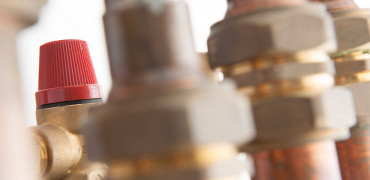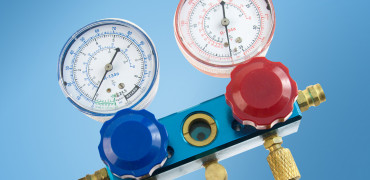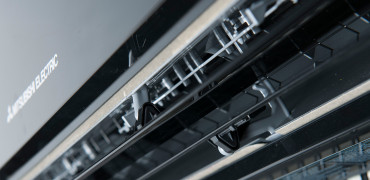The industry is abuzz with news about R32 at the moment, with several major manufacturers launching RAC and PAC models – and the price of R410A focusing real attention on the value of switching to models using the new refrigerant.
I therefore thought it worthwhile taking a moment to look at the key things air conditioning engineers need to understand about R32.
Forgive me if you know all about this already but it is such an important issue that I think it is worth looking at the key issues behind this change. This is all about reducing the impact of air conditioning on the environment, and particularly the global warming potential (GWP) of the refrigerants involved.
I’m lucky enough to work for the only company that has been able to offer an R32 VRF solution.
Why the change and why now?
These changes have come about as part of the F-Gas Regulations which are a key element of a legislative drive seeking to reduce the harm that hydrofluorocarbons (HFC) refrigerants have on global warming.
As part of F-Gas, CO2 is used as the base mark with a global warming potential (GWP) of 1.
R410A has a GWP of 2,088 compared with R32 which has a GWP of 675. R32 is already a familiar refrigerant to the industry as it makes up 50% of R410A.
R32 systems also uses up to 20% less refrigerant than R410A ones, making it more efficient which also means lower carbon emissions and lower energy costs. Made up of a single component, it is easy to recycle and has zero-ozone depleting potential.
The need for standards
There have been a few solitary voices expressing concern about the fact that it is mildly flammable, although it is very difficult to ignite and needs exacting and unusual conditions for this to happen.
Modern life is dangerous and all refrigerants can be harmful if handled incorrectly, so the sensible approach is to treat it as you would any other gas or refrigerant and always comply with F-Gas when handling or using it.
This is exactly why manufacturers offer comprehensive training on how to install, commission and maintain equipment using refrigerants.
This is also why we strongly advocate adherence to F-Gas, so that competent engineers are the only ones who go anywhere near refrigerants.
R32 is a single component refrigerant, meaning it is easier to reuse and to recycle.
It is also relatively inexpensive to produce, is easier to handle because it doesn’t separate and utilises familiar technology, keeping costs similar.
Lower running costs
It’s worth reiterating that R32 generally brings with it an increase in performance which helps lower energy bills and reduce carbon emissions for businesses.
This is now being seized on by corporations seeking to demonstrate their CSR (Corporate Social Responsibility) credentials and we have already seen corporate customers who are making the switch as soon as they can.
Whilst I mention that other manufacturers are introducing R32 ranges, I’m lucky enough to work for the only company that has been able to offer an R32 VRF solution in the form of our recently launched R32 Hybrid VRF range.
This is great for both us and the industry but I also would expect other manufacturers to follow suit over the coming years. We all have to play our part in tackling the effects of climate change, and also find ways to do this which minimises the cost to the businesses using this equipment without compromising on the high levels of efficiency and performance available with modern VRF systems.




